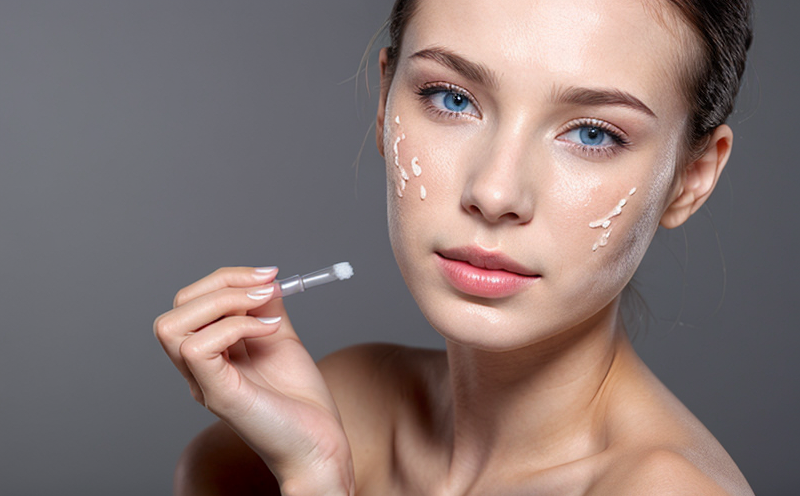In Vivo Skin Sensitization Testing of Cosmetic Ingredients
The in vivo skin sensitization testing is a critical component for ensuring the safety and regulatory compliance of cosmetic products. This testing method aims to identify potential allergens within cosmetic ingredients that may cause allergic contact dermatitis when applied to the skin. Regulatory bodies such as the European Union (EU) have implemented stringent requirements, mandating this testing before placing cosmetic products on the market.
During in vivo testing, a small patch of skin is exposed to the test substance under controlled conditions to observe any signs or symptoms indicative of an allergic reaction. This process helps in identifying substances that could potentially cause sensitization reactions. It's important for quality managers and compliance officers to understand these tests as part of their responsibilities in ensuring product safety.
For R&D engineers, this service allows them to develop new formulations with confidence, knowing which ingredients may need further investigation or alternative solutions. For procurement teams, understanding the necessity and process of such testing can help in sourcing safer materials for formulation. This test is particularly important as it aligns with global standards like ISO 10993-11:2018.
The testing procedure involves several steps including preparing the specimen, applying the substance to an area on the skin, and monitoring for any signs of sensitization over a specified period. Compliance officers need to ensure that all tests are conducted according to these standards and guidelines to meet regulatory requirements effectively.
Scope and Methodology
| Step | Action | Details |
|---|---|---|
| 1. Specimen Preparation | Prepare the cosmetic ingredient for testing. | This involves ensuring that the material is in a form suitable for application, such as a solution or suspension. |
| 2. Application to Skin | Apply the prepared substance to a small patch of skin on the test subject. | The area should be well-protected and monitored closely during the observation period. |
| 3. Observation Period | Monitor for any signs or symptoms indicative of an allergic reaction. | This typically involves checking the skin multiple times over several days to catch early signs of sensitization. |
| 4. Reporting | Analyze and report findings regarding the potential sensitizing properties of the cosmetic ingredient. | The report should include detailed observations, results, and recommendations for further testing or modifications. |
This protocol ensures that all steps are followed accurately to provide reliable data on the sensitization potential of cosmetic ingredients. This approach is consistent with international standards such as ISO 10993-11:2018, which provides comprehensive guidelines for this type of testing.
Benefits
In vivo skin sensitization tests offer several key advantages that are crucial for the development and safety assurance of cosmetic products:
- Regulatory Compliance: Ensures adherence to EU regulations which mandate this testing before product launch.
- Safety Assurance: Identifies potential allergens early in the product development process, reducing risks associated with sensitization reactions.
- Informed Decision-Making: Provides R&D teams with valuable data for formulation adjustments and ingredient selection.
- Market Competitiveness: Enhances brand reputation by demonstrating a commitment to safety and quality.
These benefits underscore the importance of this testing method in the cosmetic industry, making it an essential service for companies aiming to protect their consumers while meeting regulatory standards.
Why Choose This Test?
The decision to use in vivo skin sensitization testing should be based on several factors:
- Regulatory Requirements: It is a mandatory requirement for cosmetic products marketed within the EU.
- Risk Management: Identifies potential allergens early, minimizing risk of product recalls and associated costs.
- Data Accuracy: Provides reliable data that can be used to inform decisions on ingredient selection and formulation modifications.
- Customer Trust: Demonstrates a commitment to safety, enhancing brand reputation and customer trust.
Selecting this test ensures compliance with international standards while providing robust data for informed decision-making. This service is indispensable for any company serious about product safety and regulatory adherence in the cosmetic industry.





